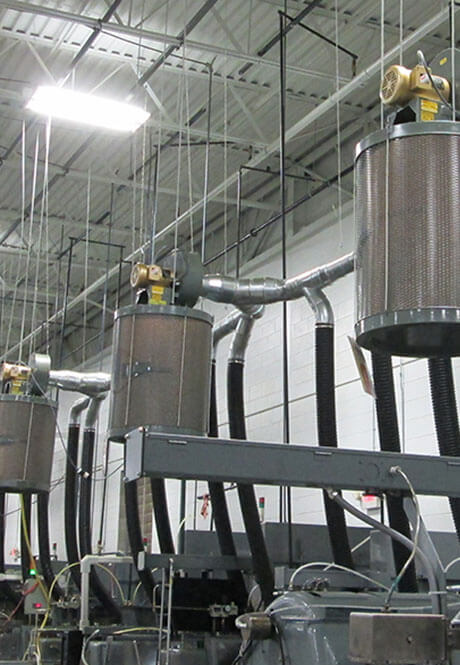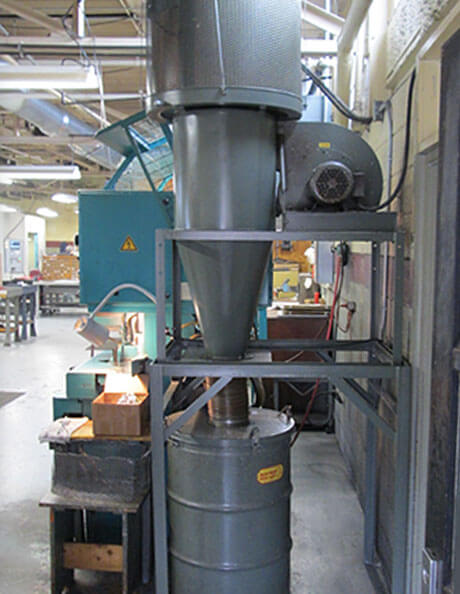MISTKOPIndustrial Mist Collectors

MISTKOP Cleans Air
MISTKOP filters mist and contaminants from the air and returns clean air to your workplace.
MISTKOP mist collectors are a very efficient and inexpensive means of collecting mist and smoke from most industrial mist generating operations.
Filters generally require replacement only once every six to twelve months, depending on service conditions.
MISTKOP filters are mechanical impingement-type filters that do not require a rotating drum, which consumes considerable horsepower and are susceptible to imbalance, vibration, and bearing failure.
View our product brochureMISTKOP Cuts Costs
AGET uses larger and higher-efficiency filters. This means we don’t waste horsepower to achieve efficiency.
MISTKOP Mist Collectors are more economical, reliable, and achieve far more air volume (CFM) with less horsepower than other mist collectors.

Is Your Air Safe to Breathe?
Coolant, oil, and lubricant mist from metal machining, grinding, or sawing, can result in mist circulating throughout an entire facility.
The mist droplets contain very fine solid particles of the abrasive or of the metal being processed.
Droplets settle on surfaces like lighting, floors, machines, or work benches, where the mist evaporates, leaving residue and tiny particles to accumulate.
The remaining residue is more than a housekeeping nuisance. It may cause respiratory problems, HVAC problems, safety issues, and shortened machinery life.

COMBINATION: Chip-Mist Collectors
Chip-Mist Collectors are used where metal dust, chips and solid particles mix with coolants, and where a Mist Collector alone cannot operate efficiently due to the higher volume of contaminants.
- Sawing
- Machining
- Drilling
- Grinding
In operation, mist mixed with chips (moisture-laden particles) is drawn into the DUSTKOP cyclone where solids and fluids are separated from the airstream and deposited into a storage container.
From the cyclone, secondary air is forced upward into the MISTKOP filter where remaining mist is separated from the air, and residual fluid is carried by a hose or tube into the sump of the equipment.
These combination units are designed for operations where oily chips, wet dust, and other pollutants are generated and can contaminate shop air or create maintenance problems.








